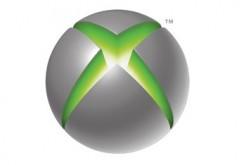Microsoft Positions System Center 2012 SP1 as Ultimate Backend Manager
Microsoft’s System Center 2012 Service Pack 1, released this week, is the company’s latest attempt to influence the increasingly heterogeneous world of data-center infrastructure. In a January 15 posting on Microsoft’s Server & Cloud Blog, Mike Schutz, general manager of Windows Server and Management Product Marketing, touted how SP1 helps System Center 2012 “integrate off-premises resources into the datacenter while retaining the same ‘single pane of glass’ common management interface.” That means administrators can manage private-cloud and Windows Azure resources via a streamlined interface. “In SP1, we’ve extended App Controller’s capabilities to integrate cloud resources offered by hosting service providers,” he wrote, “giving you the ability to manage a wide range of custom and commodity IaaS cloud services from the same management console for you to manage centrally.” Microsoft clearly wants clients interested in streamlining backend operations to embrace System Center 2012 as a way to cut through all the complexity. That’s obviously beneficial for Redmond—there’s no better way to retain clients than to act as an easy-to-use portal for messy, heterogeneous environments. But for other IT vendors in the space, it could mean the competition for the enterprise cloud could kick up another notch. With System Center 2012 and SP1, Microsoft is also angling for a bigger slice of the Software Defined Networking (SDN) market. SDN is clearly on the rise: research firm IDC recently estimated that the market for the technology could expand from $360 million this year to $3.7 billion by 2016. Increasing interest in cloud applications, converged infrastructures, and server virtualizations have fueled this growth, along with frustrations over current networks’ relative inflexibility when it comes to supporting cloud and mobility infrastructure. Several Microsoft rivals have made strides in the category, with VMware purchasing SDN startup Nicira in July and Cisco acquiring vCider soon after. “It’s too early in the evolution of SDN to draw conclusions about which approach will win or the exact architecture of future networks as there is too much innovation yet to happen, and vendors and their customers have yet to reach a common agenda,” David Krozier, principal analyst in Ovum’s network infrastructure telecoms team, wrote in a December research note. “But the search by vendors and network operators to find a better approach will eventually produce networks that are much more flexible in providing new services ([monetizing] the network) and more efficient in their use of resources (cost-effective).” However nascent the SDN market, Microsoft clearly wants a big piece of it. Windows Server 2012 Hyper-V Network Virtualization enables multi-tenant virtual networks on a shared physical network. “In SP1 we’ve built on this, adding management capabilities to simplify the definition and dynamic re-configuration of entire networks,” read the blog posting. “By applying VM placement decisions and the policy updates together, SP1 provides a high degree of agility, automation and centralized control, essential to the smooth operation of a modern datacenter.” Windows Server 2012 administrators can also use the platform’s Hyper-V Extensible Switch to integrate a virtual switch within physical network infrastructure; that’s on top of management support for IP Virtualization, switch extensions, and tenant networks. Microsoft clearly wants to become the gatekeeper in the world of enterprise cloud and infrastructure management; but it’s doubtful that other IT vendors in the space will allow it to assume that role without a very serious fight. Image: lightpoet/Shutterstock.com


